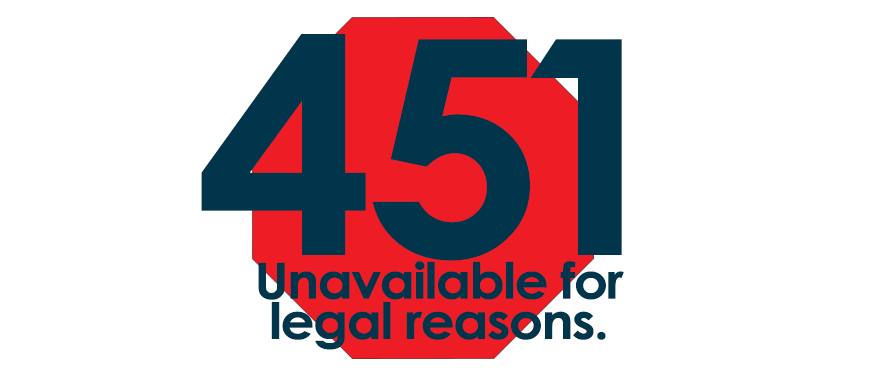Censorship Transparency Comes to the Web

Understanding the scale of censorship taking place on the internet is a persistent challenge for internet rights and civil liberties groups. The global nature of the internet means that internet and content service providers are routinely subject to requests by legal authorities to block access to certain content.
Unfortunately, there has been no easy way for a service provider to comply with a blocking order while also notifying users that censorship has taken place. As a result, users are often left unable to determine precisely why content is inaccessible; with many mistaking censorship for merely a technical issue. Consequently, users will be less likely to pursue legal recourse or otherwise try to hold their governments to account for their censorious activity.
Last month, the IETF approved a new HTTP status code that could help solve this problem. The code, which gives websites and ISPs a standardised way to notify users that content cannot be served due to a legal order, is an enormous step forward for understanding the scale of censorship on the web.
For users, this greater transparency will ultimately mean greater control over our online lives.
By offering providers a way to distinguish between technical errors (eg. 403) and legal blockages (451) the IETF has baked transparency into the web and opened up a new means of monitoring censorship. If the new code is quickly taken up, it will not be long before we see new automated censorship tracking tools which take advantage of it.
Despite its benefits, giving the web a status code for censorship was not without its controversy. One of the principal concerns was that censorious governments would simply prohibit its use. However, this may present more of an opportunity than a threat. If a government attempted to prevent the use of 451, such an action would be easily recognisable and might even come to be viewed as evidence of the kind of systematic rights violations that trigger a country’s international obligations.
The change could also have a profound effect on the transparency of blocking orders. In some jurisdictions, such as the UK, it can be difficult, time consuming, and expensive to access copies of court orders, which makes it challenging to understand the true scale of censorship taking place. A flood of requests from service providers seeking to link to court orders in their in their 451 responses might shake up centuries-old administrative systems and make publication the default.
For users, this greater transparency will ultimately mean greater control over our online lives. Instead of seeing content disappearing from the web, we will now know when sites have been forced to censor content and be able to decide what to do about it. That is a great step forward for the internet and for government accountability online.

